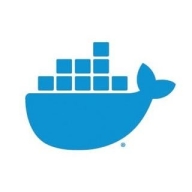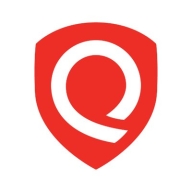

Docker and Qualys CyberSecurity Asset Management compete in the software deployment and asset management arena. Docker seems to have the upper hand due to its flexibility, ease of use, and strong community support, whereas Qualys focuses on comprehensive security features.
Features: Docker offers strong security, detailed documentation, and seamless integration capabilities. It excels in containerization, providing portability and flexibility for swift application deployment. Its support for various environments without specialized hardware is a considerable advantage. Qualys CyberSecurity Asset Management provides robust inventory management and asset monitoring. It stands out in risk identification and mitigation, offering advanced features for managing and safeguarding assets.
Room for Improvement: Docker could benefit from enhanced documentation, improved stability, and expanded security reports. Integration with Windows and a more intuitive command line interface would be advantageous. For Qualys, better integration with non-ServiceNow tools, customizable reporting, and an improved, more intuitive UI are recommended. Enhancing the user experience and asset categorization could improve its effectiveness.
Ease of Deployment and Customer Service: Docker is praised for its easy deployment across platforms, including on-premises and cloud environments. Its open-source nature and robust community support facilitate extensive documentation and assistance. Qualys is often deployed in hybrid and cloud settings, with users appreciating its integration with existing security frameworks. While Docker relies on community support, Qualys offers traditional support systems, which could be more responsive and user-friendly.
Pricing and ROI: Docker is a cost-effective solution with both free and paid enterprise versions, offering excellent ROI through efficiency and reduced deployment times. Qualys, although cost-effective for larger enterprises due to its comprehensive capabilities, may be less affordable for smaller businesses. Both solutions provide substantial ROI by streamlining processes and enhancing productivity, with Docker’s open-source nature adding further value in settings where enterprise features are unnecessary.
Improvements to our security infrastructure contributed to overall business growth of approximately 150 percent over the past year.
By automating tasks, it significantly reduces the human resources required, leading to increased efficiency and productivity.
It has reduced the number of development and scripting hours along with maintenance hours.
The support team was knowledgeable and offered a variety of quick resolution options.
Their SMEs have sufficient knowledge, and if they are not the right contact, they quickly redirect us to someone who can help resolve issues.
I would rate their customer support a ten out of ten.
Previously, only one or two applications could run on a server, but now it can handle hundreds of applications, scaling up or down as needed.
We have about 300,000 assets installed with agents worldwide.
The scalability is excellent as we manage more than one hundred thousand assets, including over one hundred thousand endpoints, approximately 2,600 servers, and more than 1,200 network devices.
Qualys Cybersecurity Asset Management has proven to be a highly scalable solution for us over the past couple of years.
I would rate the stability of Qualys CSAM a ten out of ten.
They are constantly adding capabilities.
This platform demonstrates excellent stability with consistent 100 percent uptime and no glitches observed.
Docker is a time-tested, proven solution with industry-wide applications.
In terms of communication between services, perhaps the configuration within networks between containers could be improved.
Qualys is currently not able to identify assets lacking DNS information.
Features enhancing the interaction with IT or security teams should be added, such as a ticketing feature that, if an issue arises in the CSAM module, enables direct ticket creation in systems like ServiceNow.
If there's one key aspect to focus on, it's discovery—the ability to identify assets that you are not aware of, even when you can see they are present.
I consider Docker's pricing to be affordable.
A cost-effective solution.
I believe that the stability and reliability of Qualys offer great value for the money.
A monthly subscription starting at approximately $72 per month, depending on the specific package and features included.
It allows the software to run on various machines without compatibility issues, saving a lot of time.
The most valuable feature is the simple containerization.
By correlating this with QDS scores, we can accurately assess the risk level of high or low QDS scores associated with each asset and monitor them accordingly.
The most valuable feature is the real-time visibility Qualys CyberSecurity Asset Management provides into all assets across our development and operational environments.
It also performs scans to identify any vulnerabilities, which helps to take proactive measures before those vulnerabilities are identified by any attacker.
| Product | Market Share (%) |
|---|---|
| Docker | 4.4% |
| Qualys CyberSecurity Asset Management | 2.1% |
| Other | 93.5% |


| Company Size | Count |
|---|---|
| Small Business | 22 |
| Midsize Enterprise | 4 |
| Large Enterprise | 34 |
| Company Size | Count |
|---|---|
| Small Business | 6 |
| Midsize Enterprise | 2 |
| Large Enterprise | 16 |
Docker is a versatile container platform used for running and deploying applications in isolated environments, ensuring consistency across development, testing, and production.
Docker offers solutions for containerizing applications, automating deployments, and managing infrastructure through its robust platform. It supports CI/CD workflows, provides a development platform for container management, and simplifies the setup by using streamlined tools. Organizations leverage Docker for building microservices, running UI applications, deploying web services, and setting up secure environments. It also facilitates managing containers via Kubernetes and creating development stacks for enhanced productivity.
What are Docker's key features?Industries implement Docker for CI/CD pipelines, scaling services, and improving resource utilization. Tech companies use Docker for building and deploying their software in isolated environments. Finance and healthcare sectors deploy applications securely, ensuring compliance with regulatory standards. Educational institutions set up consistent development environments for coding labs and training students in advanced technologies.
Qualys CyberSecurity Asset Management provides advanced real-time asset visibility, dynamic tagging, and External Attack Surface Management. It streamlines asset discovery and management using cloud agents and IP-based scanning, enhancing risk management and software lifecycle tracking.
Qualys CyberSecurity Asset Management offers a comprehensive solution for managing asset inventories and tracking software lifecycle states. It facilitates network visibility and supports zero-day vulnerability solutions, enhancing security posture through efficient monitoring. Users benefit from its cloud-based interface, which provides in-depth asset configurations and insights. Key features include automated vulnerability scanning and unauthorized software management, reducing manual efforts. The platform also emphasizes the importance of timely remediation and ongoing risk mitigation across multiple environments. Despite its strengths, users note the need for enhanced integration with additional CMDBs beyond ServiceNow, as well as cost efficiency improvements. Requests also include better report customization, more scan control, and a simplified UI.
What are the key features of Qualys CyberSecurity Asset Management?In industries like finance, healthcare, and manufacturing, Qualys CyberSecurity Asset Management enhances asset control by offering visibility into hardware and software configurations. It aids in maintaining security compliance and identifying unauthorized software, crucial for sectors with strict regulatory requirements.
We monitor all Software Supply Chain Security reviews to prevent fraudulent reviews and keep review quality high. We do not post reviews by company employees or direct competitors. We validate each review for authenticity via cross-reference with LinkedIn, and personal follow-up with the reviewer when necessary.